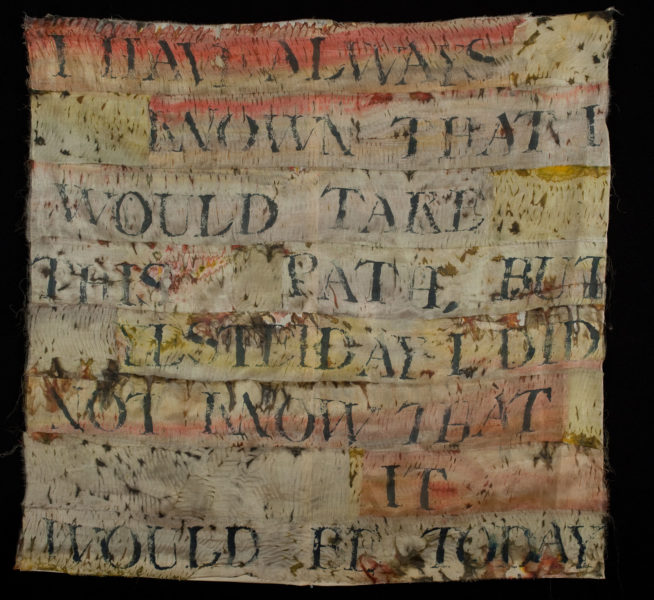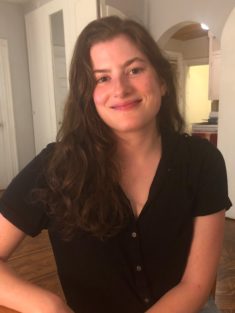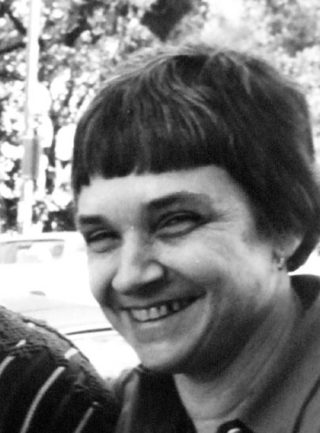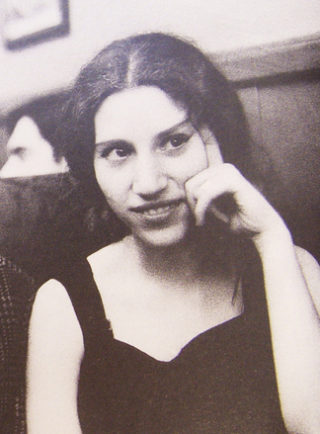Daisy Atterbury & Maxine Krenzel
In Spring of 2018, two first-year writing classrooms at Brooklyn and Queens College embarked on a semester-long peer-to-peer writing exchange inspired by Adrienne Rich’s teaching materials published in “What We Are Part Of: Teaching at CUNY, 1968-1974” through Lost & Found: The CUNY Poetics Document Initiative, as part of Lost & Found’s mission to bring our publications into the classroom. Over the course of the semester, students designed their “Dream Course” along with a writing assignment to be completed by a student at a different campus. Students at Queens responded to assignments designed by students at Brooklyn, and vice-versa. The result was an unexpected opening.
Below is a conversation between Maxine Krenzel and Daisy Atterbury about the experience. See also their article in the Journal of Interactive Technology & Pedagogy, '"Diving Into the Wreck': (Re)Creating the Archive in the First Year Writing Classroom."
--
Maxine Krenzel: I love how many layers there are to the project, particularly the many levels of collaboration that took place during its unfolding. First, we were in dialogue with Adrienne Rich’s archive as well as the other flyers, memos, and artwork created by students at CUNY in the late 1960s; my students were in conversation with your students; we were also working with each other throughout the process, both collaboratively designing the project as well as writing about it in the form of this article as well as a lengthier piece reflecting on the scope of the project. I’m curious about collaboration as pedagogy and to what extent you would recommend other teachers at any level creating projects that engage multiple classrooms and multiple teachers?
Daisy Atterbury: I feel like we started working together when you lent me Eve Kosofsky Sedgwick’s A Dialogue on Love, which was years ago now but which remains one of those books I’ve never been able to shake (and don’t want to). This book hit like an explosion for me. It really did something to me. I like this moment where she talks about being a “patient” – or, being called the patient by Shannon, her therapist, and thinking, fine, that works – “… it seems a modest word that makes no claim / to anything but--wanting / to be happier.’” I like this because similarly I used to find the word ‘collaborator’ to actually be kind of distancing, but now I want to accept it, like patient, because it’s a gentle word and, why not, because I think we can keep it really full and say that it can encompass these enormous modes of feeling and being that bring me back to Sedgwick. She thinks about friendship as this deep thing that actually involves love, and that can be an intellectual meeting that is subtle and is like, “no big deal,” at the time but is actually a huge deal. It’s really hard to think with someone. And to move from that thinking to making an object – like this experiment in pedagogy for others to engage – and to share that object with 49 strangers showing up in the classroom …that’s quite a thing to launch. If we had known what we were doing going into it, we might not have embarked on this project at all!
In thinking about the layers of collaboration required of (and produced by) this work, I can see that the working-together requires a certain vulnerability and openness to risk on the part of the instructors, which is then reproduced amongst students who take on the role of ‘instructors’ for each other. One student crafts an assignment sequence for another and, suddenly, that student has entered into a contract (contact) with another student. This contract is different than the one that normally exists between the Teacher and the Student because that contract is governed by other rules and other power dynamics. Student-to-student exchange is something no one wants to do at first (not even me…actually, never me) because you actually have to negotiate whether or not you care about the assignment, about the person, and about the whole experience – and on top of that, you have to understand and determine whether the other person cares about it the way you do (or might) (or might not). I think what I’m saying is there’s an erotics to the exchange, and on every level it’s an interaction that is startlingly vulnerable and uncertain. This is not the way classroom dynamics always operate because of how expectations meet layers of mediation.
As far as what I would recommend for other teachers: I don’t know, what is teaching to you? The foundations of the project are in the co-creation of the shared assignment sequence, first, and in how that very act of co-creation sets the tone in the classroom and is reproduced by students creating their own objects together. Despite waxing poetic about it above, I’m not invested in a bland or oversimplified idea of collaboration in teaching, art or other kinds of organizing work. It’s not as if dynamics between these two particular cis white women are ideal (they’re not), or a model (they’re not) or even reproducible in another context. In designing pedagogical assignments, scholars of composition and rhetoric have failed when speaking in universals. We should always be thinking context, thinking at the conjuncture, not just in thinking about students and institutions but also in thinking about working with another person. Intimacy is hopefully always reaching a wall and then changing its elemental nature.
I’m often more interested in refusal than in ‘intimacy,’ especially because we’re usually working with these really canned notions of intimacy. It’s interesting to think about refusal as bound up in intimacy in a pedagogical setting. I think a lot about Kandice Chuh’s essay “On Not Mentoring.” I mean, let’s talk about that! She considers some of the fantasies both instructors and students inhabit in their notions about relationships in the university:
Thinking about mentoring can tell us something about the cluster of promises, the attachments and fantasies, and generally, the double-bind that defines the place of minority discourse in the academy. Doing so also helps us to remember that the university was never a utopian institution, that the current potent rhetoric of its “defense” might unintentionally but deeply be linked to a fantasy of it as harboring its potentiality as such, a fantasy that can render it more difficult to negotiate contemporary conditions, to navigate the academic world and understand the constructs and conditions that privilege certain fantasies and attachments and refuse others. (Chuh, Social Text, 2013)
And spoiler alert, she ends by saying that “the personality of mentoring” should perhaps give way to “the more generic and impersonal category of advising” as a way of understanding a teacher-student (and let’s add even student-to-student, or peer-to-peer) relationship. When we think about “social justice work” in relation to teaching I think about that – basically, what does ‘intimacy’ look like when it accounts for and just exists within structures of power: settler colonialism, racism, sexism and homophobia? I would venture, and I think this project reinforces, that it looks like a kind of vulnerability produced in and by the cautionary, speculative and exploratory, and it comes with boundaries and protections and limits. And it certainly has a lot to do with fantasy and the meeting of fantasies, both shared and dissonant. It also looks like co-producing sets of shared vocabularies, as we’ve found, rather than the assumption that a set of vocabularies is already shared (which is part of acknowledging that desires and experiences are present which are not even remotely shared). And I do think this emphasis on co-working, which we can call collaboration, is how we co-create other aims and other universes of exchange and interaction. As Chuh says, “Acknowledge fantasy and identify its conditions of (im)possibility; proliferate others and the conditions that might induce them.”
My question for you, Maxine, comes through having talked previously about “failure” in connection to teaching. We all know that failure isn’t bad – failure can be productive! It’s even hip to think about failure being a deep part of the experience of writing and thinking. In Feeling Backwards, Heather Love talks about experiences researching queer archives when findings do not easily lend themselves to a recuperative narrative (sometimes, what’s revealed is what must then be mourned), which can seem like a failure to produce a certain kind of narrative—but which then yields others. And in recalling the Queer Art of Failure, we can invoke Jack Halberstam by saying that failure frequently points the way to creative, collaborative and unexpected ways of being in relationships or in being socially and politically. But what about failing students as a teacher? This project succeeded on some clear and exciting levels, but to my mind maybe it also failed, perhaps just on the level of human execution, where the rubber meets the road in teaching (what does teaching look like within the universe of those very real constraints which are always imposed from the outside: time, money, human particularities, needs, affective environments, power). What does the idea of failure mean to you in connection with this project? What about in thinking about teaching, or teaching “the archive” more generally?
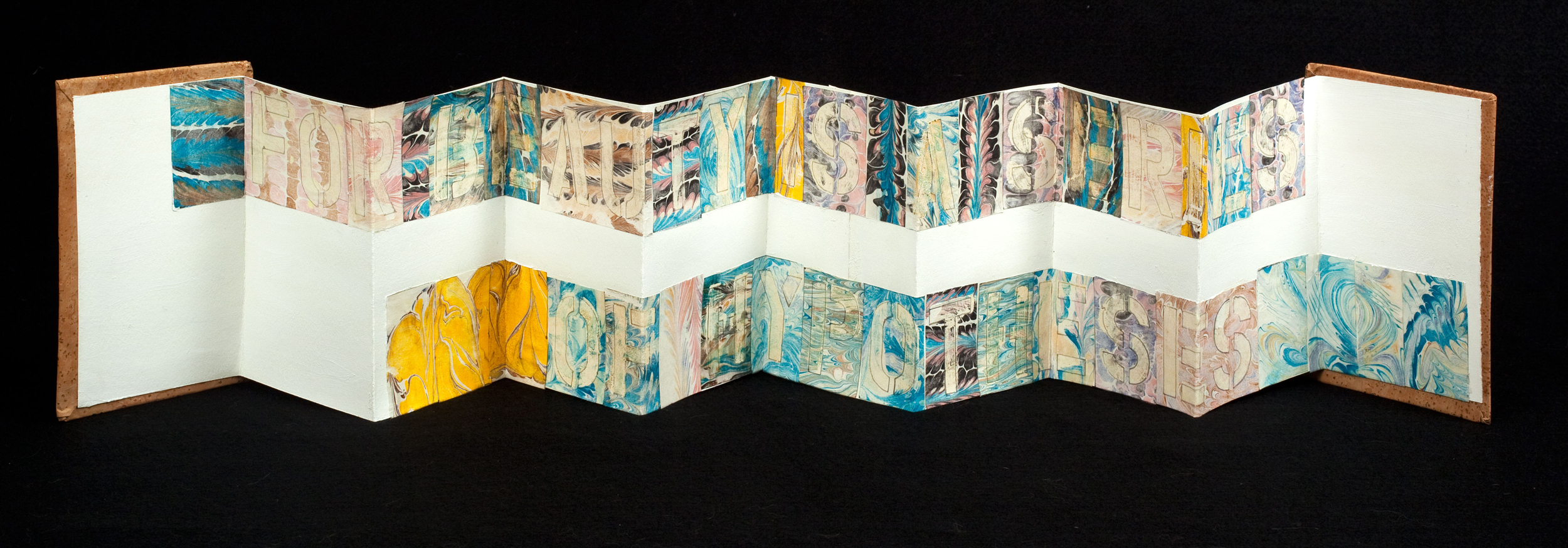
MK: There are two moments from this project where I remember feeling like I had failed my students. The first was when two of my students never turned in their responses to another student’s writing prompt, and the second occurred when one of my students did not receive a response on the day when everyone else had theirs returned to them. I remember asking myself, why had we not done more to ensure everyone had the chance to respond to each other? Why had the students failed to feel accountable for another student’s work? What went wrong? But the student in my class who did not receive a response wrote in her reflection paper that part of the problem of the project was that student collaboration was still being mediated through teachers rather than putting students directly in touch with each other—she suggested we actually have students connect with each other over email, rather than go through us. Her suggestion would have made the exchange much more logistically feasible, as managing and delegating the exchange of 49 students was time-consuming and, as we realized, so not the point of the exchange. But her response really helped me see that the failure I felt actually pointed to a resistance on my part to fully give up being in control of the project and to trust my students to do the work for each other. I realized the way in which I was still holding onto a prescriptive idea of a teacher and that in the same way I had asked my students to rethink their roles as students, I had to also do that work for myself.
Failure is also a tricky concept because it usually assigns blame to a single person or cause. However, part of this project’s success was the ways in which students were able to reflect on how their education had failed them—and this is not just one teacher or one class, but pointing to a much longer history in which students (and teachers as well) are implicated in an educational system that, as educator Paulo Freire would say, is designed to take their agency away from them, to make them feel like “empty vessels” for knowledge. In the writing classroom, this failure plays out in terms of “correcting” what we perceive as the errors and mistakes that students make in their writing, which in turn silences student voices. I’m thinking now of how scholar Min Zhan Lu points out in her critique of essentialist views of language put forth in Mina Shaughnessy’s Errors and Expectations, when we correct student “mistakes,” we always lose the language and politics of that student; to give space for student voices, we have to resist asking them to translate their writing into standard English. Even though we designed this project to create a space for students to speak to each other and experiment with voice without catering to the expectations of a teacher, part of the complexity of this project was having students reckon with how they felt insecure and still not free to write even when given the chance to do so. Many reported that they still wrote their prompts and responses formally and impersonally out of habit. And we also came up against similar frustrations in that as teachers we also could not entirely let go of the control over student work, even when engaging in a project designed to do just that.
But it’s not as if the disappointments we encountered are unique to our classrooms or project. The archive that we were working with also isn’t perfect. Isn’t it interesting that we don’t see the responses or work of Rich’s students, though we do see all of the assignments and prompts Rich gave them? Did her students, like our students, also feel themselves restrained by an internalized sense of what it means to be a “good” writer? We don’t know, and perhaps that is because those records of student work don’t exist. Still, I think that this absence of student voices is even more of a reason to think about, and like you said in your question, mourn the continuing failure to include student voices in pedagogical as well as institutional archives. Though this is not to say that we need to “fix” this absence or recover what has been left out of the archive, but continue to question the pattern of silence. As Lisa Lowe writes in her article “History Hesitant,” we should practice hesitation when doing any sort of archival recovery work, asking ourselves to what end are we using the archive:
“Hesitation, rather than rushing to recover what has been lost, need not be understood as inaction or postponement, or as a thwarting of the wish to provide for a future world. Rather, it halts the desire for recognition by the present social order and staves off the compulsion to make visible within current epistemological orthodoxy.”
This passage asks anyone using, publishing, teaching, or curating an archive to consider who really benefits from work that claims to make visible or “restore” previously unheard voices; who does recovery work privilege? Part of this project was to have our students create their own body of work – to engage with Rich’s archival materials through creating an archive of their own – though we also need to think about all that was left out of the written records. The project is reduced to a folder of documents, though we can clearly see how much has been lost in the documents that do remain. So what to do with these fragments (and failures) of an archive? I think that rather than trying to restore what’s been lost by using our students’ work, really questioning these persistent absences and failures brought about by the university is instead the work we need to be doing right now.
Since I’m thinking about some of the generative and also more frustrating failures that go along with using archival materials in the writing classroom, I’m curious what would you have done differently in the project? As the first time doing a collaborative writing exchange, I know we, as well as our students, were challenged and also were surprised as we went along. How did collaborating with another classroom challenge you to grow as a teacher?
DA: Some people obsess about what they would have done differently in any endeavor, and I’ll just say: I don’t love editing. Ha! It’s hard because I know my students benefit from thinking and then re-thinking, and I know that my own writing gets better with editing (for example, all this stalling on the question could be trimmed)! In terms of execution and framing—a lot could change. This whole endeavor could benefit from more time and space (like most things, like life in New York). Writing is the hardest thing in the world. Writing this now is like sports.
This project needed to unfold with enough time for students to go through a sequence of identities perhaps required to be a writer, editor and creator. Students in my class didn’t have time to reflect and critique (I gave them less time than you gave your class, I believe). They engaged with another student’s work while performing a role that did not call for a peer workshop process, and so they were in the position of having to accept the writing they received “as-is,” not as they perhaps imagined it might be in its final form. In a way, this was an exercise in letting go, in indulging a more visceral, raw part of the writing process and forgoing rewriting. We could have approached it different ways.
I could go on about the systems we used (Dropbox, for starters), but I fear that conversation is less interesting than the one that asks, how do we adjust our expectations and actions in situ? We had to improvise for students who did not manage to turn anything in. What do you do when someone leaves their partner high and dry? This is why group work can feel like the bane of every student’s existence. But we did a good job talking about disappointment in the classroom, what it means to put in effort and not have that effort met in kind. We shifted things around, made sure each person did have someone to exchange with by doubling up.
We talked a lot together about Diana Taylor’s interest in performance – her “call to not ‘privileg[e] texts and narratives’ but pay attention to ‘the milieu and corporeal behaviors such as gestures, attitudes, and tones not reducible to language.’ I wonder, how do you think about performance in connection with teaching when all is said and done (after having gone through this structured assignment sequence, which – I think? – necessarily changes how we’re thinking about teaching and improvisation). What theories of (thinking about) performance applicable to the classroom experience are you yourself left with as you think back on working with students in this way?
MK: While so much of the project relied on the exchange of pieces of writing—with one student composing and then completing a writing prompt for their partner—I think the performance of the project itself, meaning the unfolding sequence of assignments and also the dialogic structure of the exchange, unearthed some interesting reflections on the experience of learning and working in the space of a classroom. Thinking about what was enacted through embodied language as well as through movement of text between students allowed us to think about how teaching and interconnected relationships and power dynamics in the writing classroom depend on much more than writing alone. In the classroom, there are prescribed ways of relating to each other according to the intersection of one’s race, class, gender that become so routinized, students and teachers often overlook them and, in turn, reproduce them. I’m reminded of what bell hooks says in Teaching To Transgress about how teachers and students are trained in the white Western European tradition that “uphold(s) the idea of a mind/body split, one that promotes and supports compartmentalization” making the significance and gravity of one’s unique body and history in the classroom irrelevant. Yet when we shift our attention away from the ideals of objectivity and disembodiment, we instead can be curious about how questioning our roles, feelings, and power dynamics in and out of the classroom can empower students to create different ways of relating to each other and themselves.
I think what my students enjoyed the most in the project was having the chance to create writing prompts for each other—to play the role of the teacher and also realize the responsibility and accountability that comes with writing for another person. I will say that it’s interesting that although we never asked our students to play the role of the “teacher” or “student” in their assignment, the “teacher/student” dichotomy nevertheless came up in their reflections out of their own associations with writing in the space of the classroom. But by reflexively enacting these identities, we and our students could use the collaborative and performative aspects of the project to reimagine these roles we enact in everyday life.
